We are taking gravity cores to sample the uppermost sediment layer near the lake floor vents. In some cases we may be able to sample sediments that were deposited during the Little Ice Age, some 1600 years ago. Sediments near the vents are altered by the hydrothermal fluids, which changes their composition. In addition, the pore fluids in the sediments contain hydrothermal components that will help us understand how the hydrothermal fluids migrate through, and interact with, the lake floor sediments.
Photos by Rob Sohn, WHOI. Work was completed under an authorized Yellowstone Research Permit.

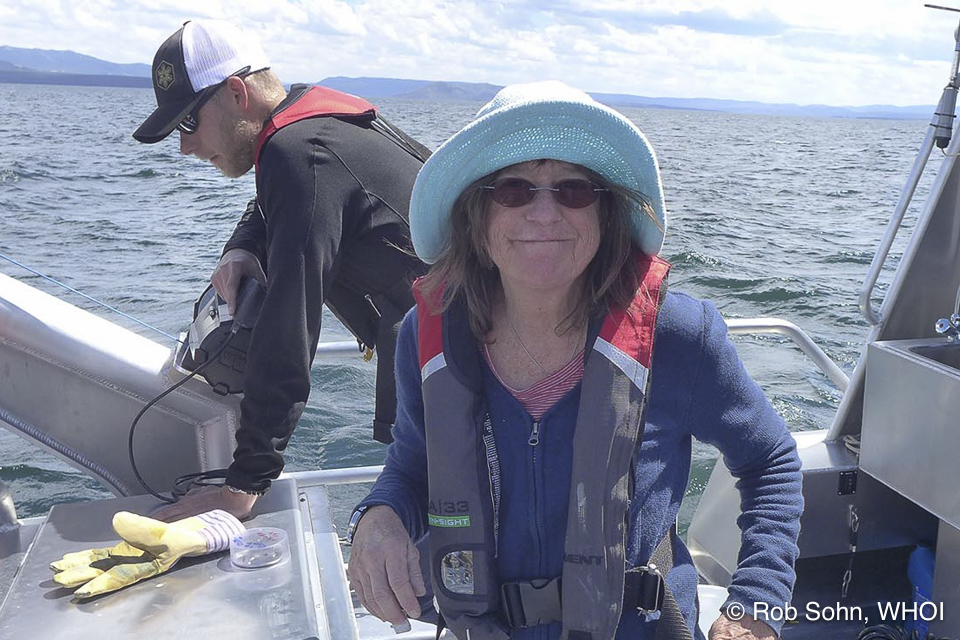
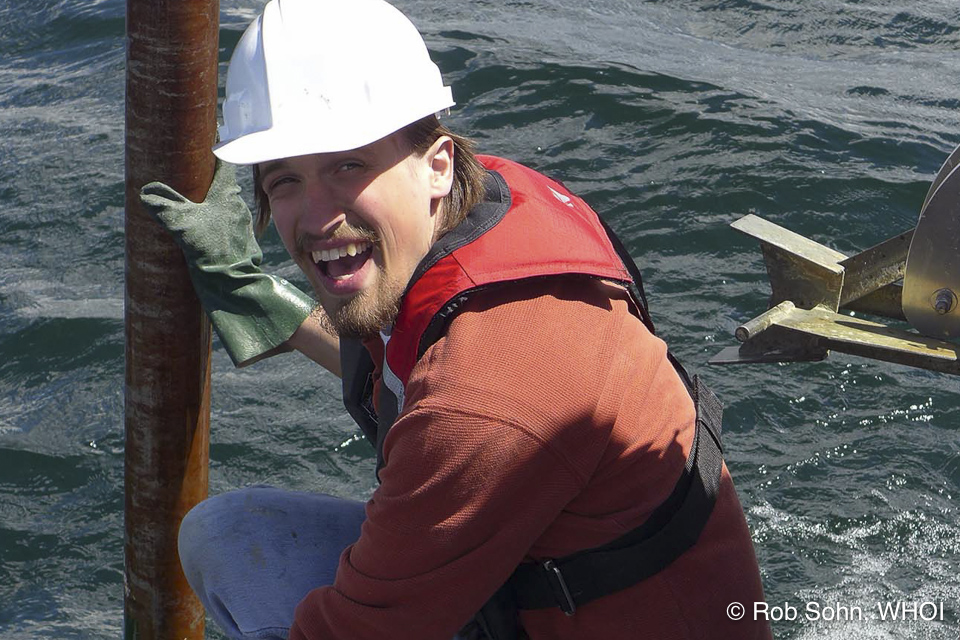
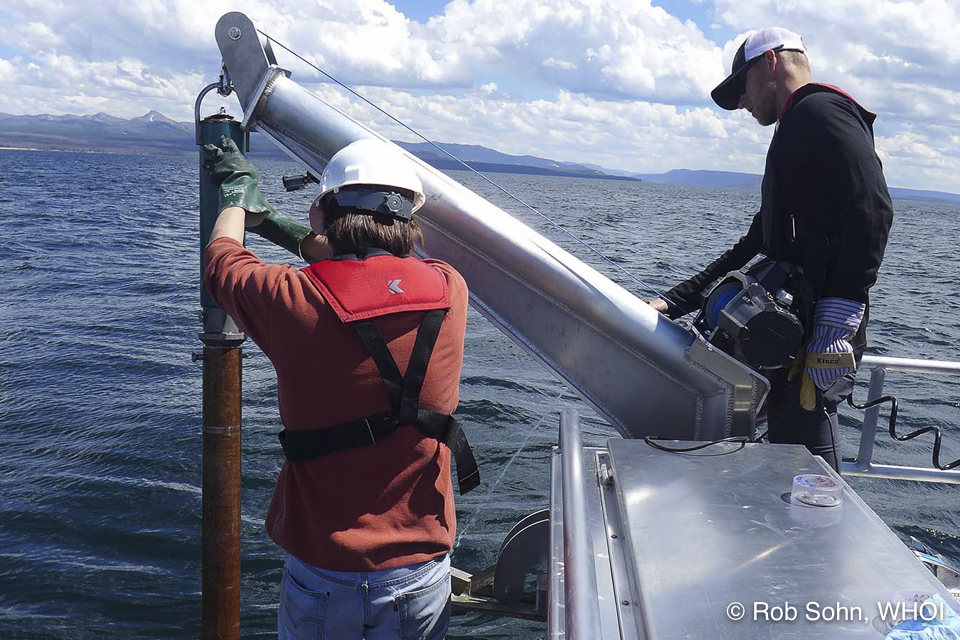
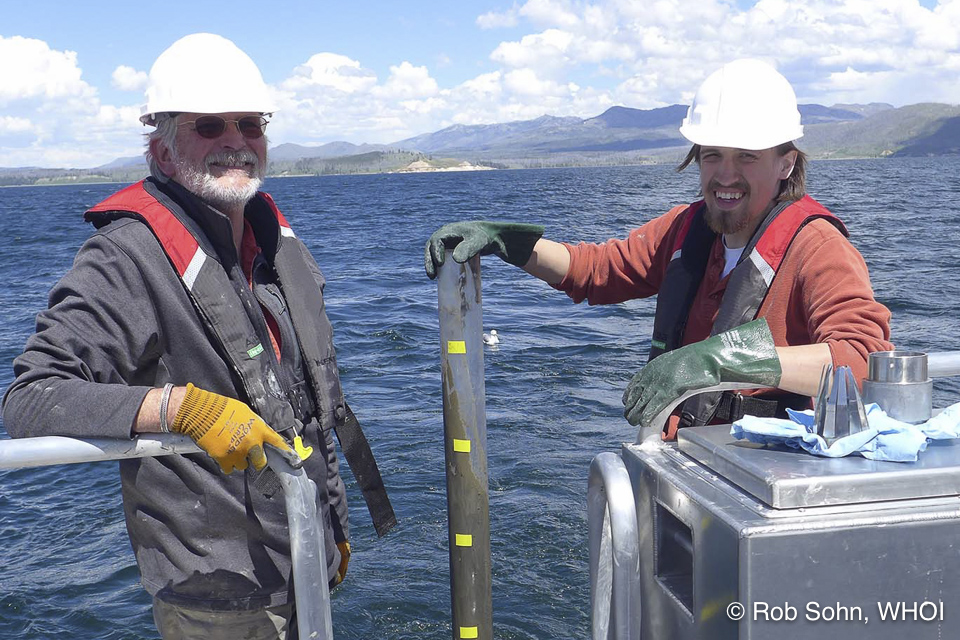
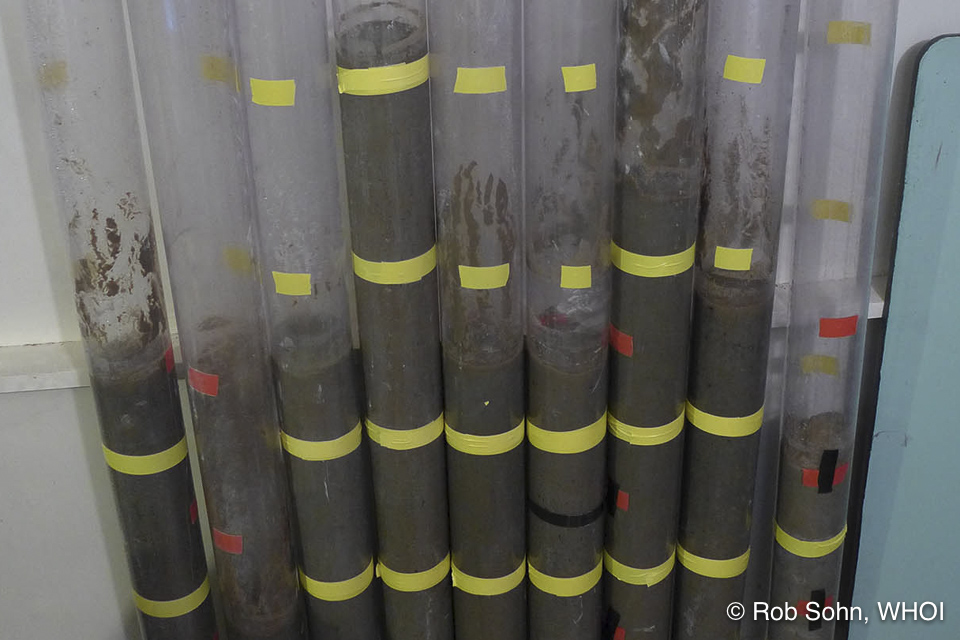
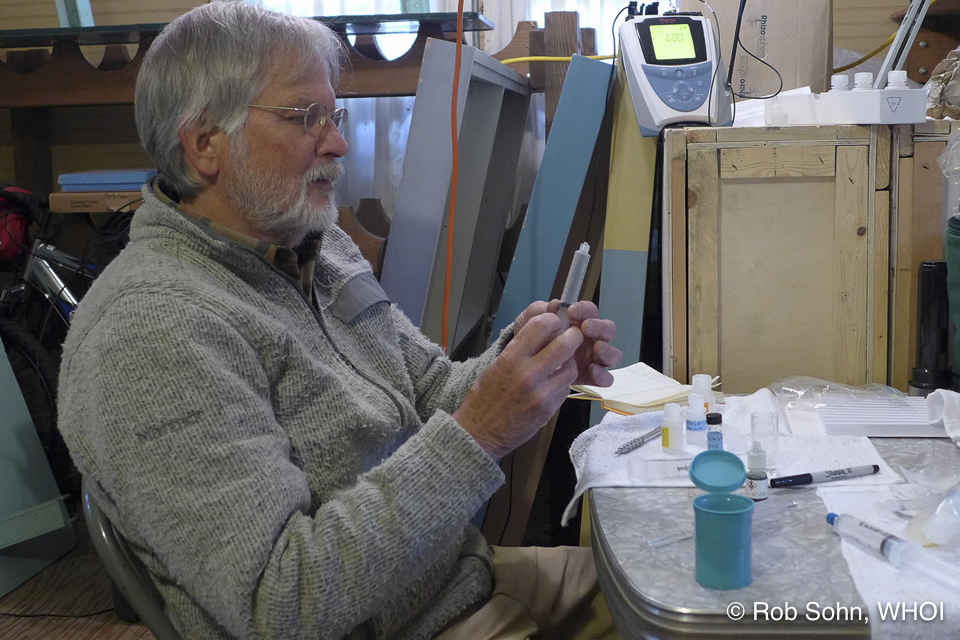
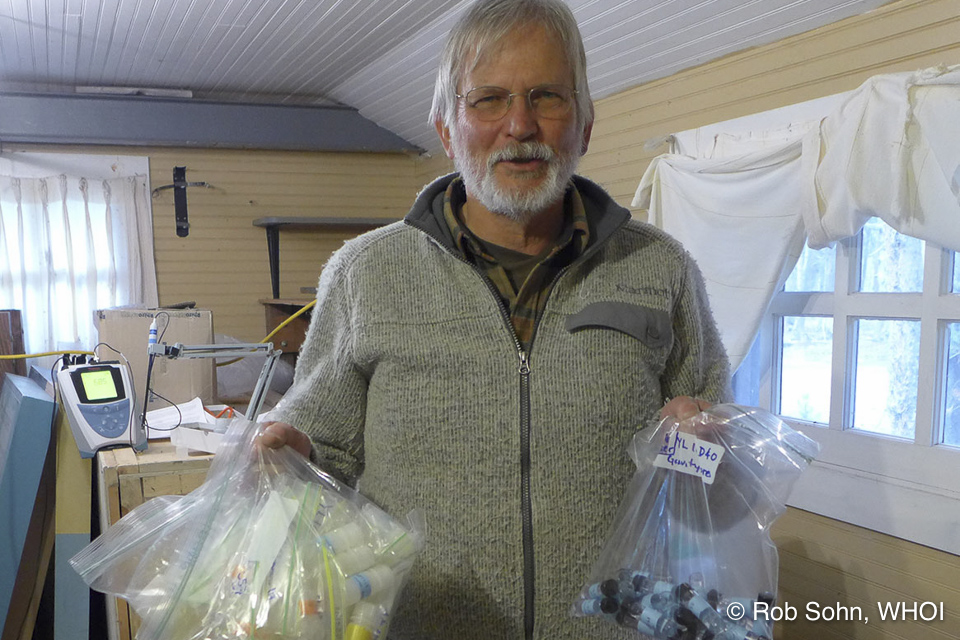
The gravity coring effort is led by Pat Shanks, a geochemist who has been studying thermal fluids in Yellowstone for more than 20 years. Work was completed under an authorized Yellowstone Research Permit.
Pat’s accomplice in the gravity coring effort is Lisa Morgan, who has been working in Yellowstone for 38 years, and who brings her sunny disposition to every endeavor. Lisa is also leading the piston coring effort, which will occur in September. Work was completed under an authorized Yellowstone Research Permit.
The gravity coring team is rounded out by Chris Schiller, a new graduate student working with (co-PI) Cathy Whitlock at Montana State University. This is Chris’ first time gravity coring and working in Yellowstone, and he’s been soaking it all up. Work was completed under an authorized Yellowstone Research Permit.
The gravity corer is basically a meter-long steel cylinder with a big (~100 lb) lead weight on top. It is lowered from the winch on the aft of the boat until it is about 10 m above the lake floor. Then we put the winch into ‘neutral’ and let the lead weight drive the cylinder into the sediments. Work was completed under an authorized Yellowstone Research Permit.
There is a plastic liner inside the steel cylinder that allows the sediments to be extracted preserving their layering. Pat and Chris are smiling because this core almost completely filled the meter long liner - a big one! Work was completed under an authorized Yellowstone Research Permit.
Not bad for a day’s work! Now the real work begins. Work was completed under an authorized Yellowstone Research Permit.
Most of the analyses will be done in a geochemistry lab, but the bicarbonate concentration, which is a proxy for CO2 concentration, is measured immediately after sampling. Work was completed under an authorized Yellowstone Research Permit.
Pat has a lot of samples to analyze when he gets home! Work was completed under an authorized Yellowstone Research Permit.



